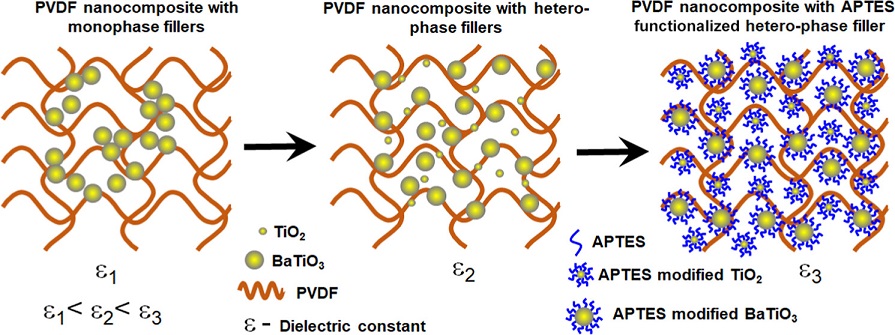January 2023:
High Accμracy Project
Press Release 24th January 2023
UCL publish work supported by their activities in Hi-Accµracy
Project partner University College London has published their paper ‘Surface Modification of Hetero-phase Nanoparticles for Low-Cost Solution-Processable High-k Dielectric Polymer Nanocomposites’ in the peer-reviewed journal ‘ACS Applied Materials & Interfaces’ with an acknowledgment of the support received from Hi-Accµracy.
For Hi-Accµracy, each pixel of the QD-LED from the front panel is controlled by a 2T+C unit from the back panel. The application of high k material could lead to minimizing the size of the capacitor in each pixel, which could further lead to a better resolution of
the display. Polymer nanocomposites combine the good processing properties of the polymer and the high dielectric constant of the inorganic filler. The surface modification of nanoparticles (NPs) is crucial to achieving the uniform dispersion of nanofiller in the polymer membrane. In this work, TiO2 and BaTiO3 NPs were selected as nanofiller. Surface functionalization of TiO2 and BaTiO3 NPs enhanced the dielectric permittivity of polyvinylidene fluoride (PVDF) NCs by 23 and 74%, respectively, measured at a frequency of 1 kHz. By combining the APTES-TiO2 and APTES-BaTiO3 NPs, a hetero-phase filler(HPF) was developed and its impact on the dielectric constant of PVDF-based NCs was studied. The addition of 5% vol of APTES-TiO2 and APTES-BaTiO3 NPs with a mixed ratio of 1:3 led to NCs with a dielectric permittivity of 76.1 and a tangent loss of 0.01, measured at 1 kHz. The excellent performance of the HPF NCs is attributed to the synergy effect of the size and dielectric constants of the two nanofillers, which has led to the maximum interface and interphase polarization of the nanocomposite. This work is an important step toward inexpensive and easy-to-process high-k nanocomposite dielectrics. The proposed hetero-phase filler concept enabled by simple surface functionalization of the NPs creates new opportunities for the development of printable high-k dielectrics. This material is suitable for a broad range of other applications such as sensors, memory devices, and thin-film transistors due to their easy processing. Low-cost and lightweight making it suitable for applications in 5G communication as a substrate, base station, and coupler applications.
The full paper can be accessed at https://pubs.acs.org/doi/10.1021/acsami.2c19559
End To learn more and access the full programme please visit: https://www.horizon-europe-community.at
To learn more and access the full programme please visit: https://www.horizon-europe-community.at
To learn more about these innovations, as well as details about the partner organisations, visit www.hi-accuracy.eu This project has received funding from the European Union’s Horizon 2020 research and innovation programme under grant agreement No. 862410.